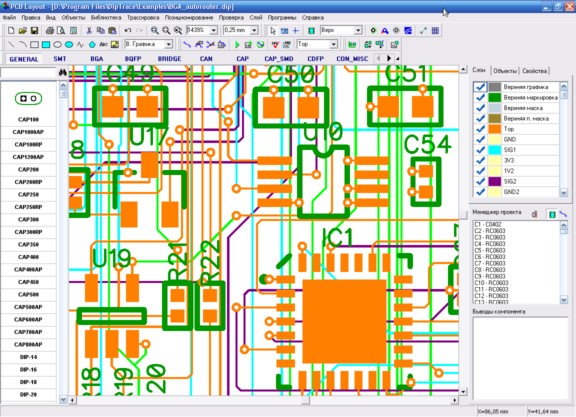
Start DipTrace, and select the "PCB Layout" tool. The library is a simple zip file that you can extract in the directory of your choice, but that will have to stay at that place. If not yet done, start by installing DipTrace, then download Yoctopuce library from our web site. Installing Yoctopuce Library for DipTrace If you prefer to see the steps being performed in front of you, rather than reading explanations, you can skip directly to the video. NB: all steps described below are illustrated from A to Z in the video at the end of this article.
Diptrace pcb layout tutorial how to#
We will now explain how to use DipTrace to create a PCB dedicated to assemble Yoctopuce devices. And we will continue to update this library in the future as new devices will be released. We have just created a new add-on library for DipTrace, with the footprints for all Yoctopuce devices available until now. DipTrace includes many standard components such as terminal blocks and connectors. This library has to include the dimensions of each component, as well as the exact position of their connection pads, to let you easily create PCB connections between components.
Diptrace pcb layout tutorial mac os x#

Today we are showing a second alternative, which also solves the question of fixing the complete system in a dedicated enclosure. One possible alternative to USB cables is the use of small wires with 1.27mm connectors, much smaller, which can be soldered on all our devices. But using micro-USB cables for interconnections is often not adequate to make a robust, compact and professional-grade solution.


It is easy to combine Yoctopuce devices to build a complex system, like Lego bricks.


 0 kommentar(er)
0 kommentar(er)
